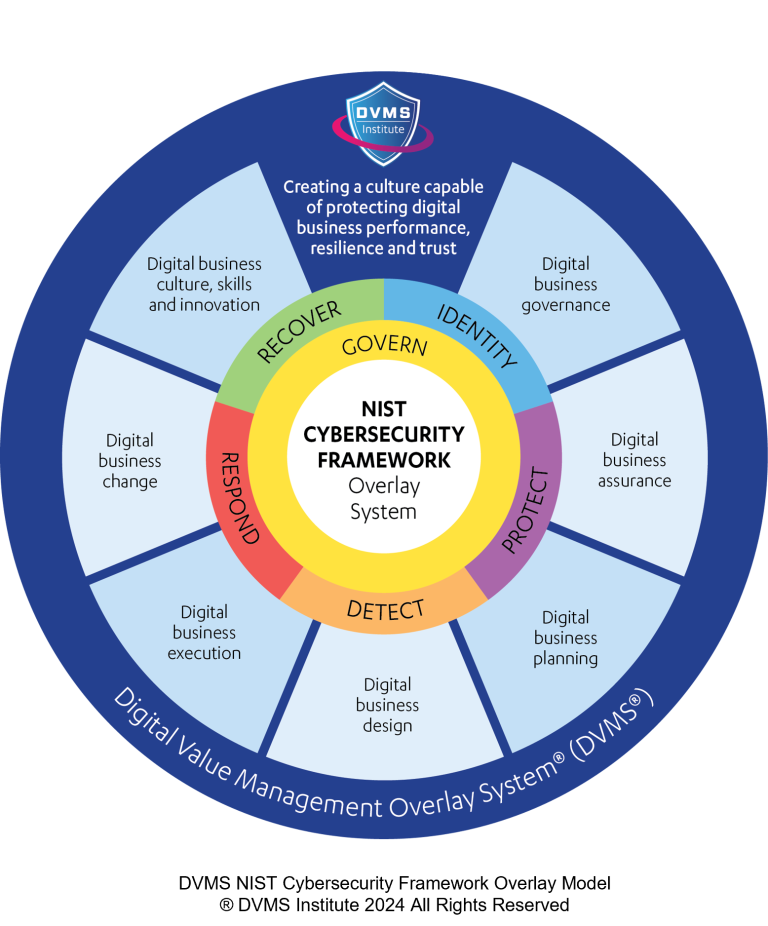How AI Will Help Organizations Understand, Manage, and Protect the Value of its Complex Digital Ecosystem
Rick Lemieux – Co-Founder and Chief Product Officer of the DVMS Institute
Artificial intelligence (AI) is poised to revolutionize how organizations navigate the complexities of the digital age. By leveraging advanced algorithms and machine learning techniques, AI empowers organizations to unlock valuable insights, optimize processes, and make data-driven decisions. One of the most significant ways AI reshapes the digital landscape is by helping organizations better understand the intricate relationships between various digital components.
AI-powered analytics tools can process massive amounts of data from diverse sources, such as customer interactions, social media feeds, and operational systems. AI helps organizations comprehensively understand their digital ecosystem by identifying patterns and correlations within this data. This enables them to pinpoint areas of inefficiency, potential risks, and opportunities for improvement. For instance, AI can analyze customer behavior data to identify emerging trends, preferences, and pain points, allowing organizations to tailor their products and services accordingly.
Furthermore, AI can be used to model and simulate complex digital systems. Organizations can test different scenarios, predict outcomes, and optimize performance by creating virtual representations of these systems. This is particularly valuable for organizations with intricate IT infrastructures or supply chain networks. AI-powered simulation tools can help identify potential bottlenecks, vulnerabilities, and areas where automation can be implemented. By understanding these complexities, organizations can proactively address issues and mitigate risks.
Another powerful application of AI is cybersecurity. As cyber threats become increasingly sophisticated, AI can help organizations stay ahead of the curve by detecting and responding to threats in real-time. AI-powered security solutions can analyze network traffic, identify anomalies, and flag suspicious activity. Additionally, AI can automate incident response processes, reducing the time it takes to contain and mitigate security breaches. By understanding the intricate patterns of cyberattacks, AI helps organizations strengthen their defenses and protect their digital assets.
AI is also transforming the way organizations manage their digital workforce. AI can identify areas where individuals may need additional training or support by analyzing employee performance data. It can also help optimize workforce allocation, ensuring the right people are assigned the right tasks. Moreover, AI-powered chatbots and virtual assistants can streamline communication and provide employees instant access to information and support. AI can help create more efficient, productive, and engaged workforces by understanding the complex dynamics of human behavior and organizational culture.
AI is a powerful tool that can help organizations navigate the complexities of the digital age. By leveraging AI-powered analytics, simulation, cybersecurity, and workforce management solutions, organizations can better understand their digital ecosystems, optimize processes, mitigate risks, and drive innovation. As AI continues to evolve, its potential to unlock new insights and improve decision-making will only grow. By embracing AI, organizations can position themselves for success in the digital age.
About the Author

Rick Lemieux
Co-Founder and Chief Product Officer of the DVMS Institute
DVMS Institute is a renowned provider of accredited (APMG International), Assured (NCSC-GCHQ-UK), and Recognized (DHS-CISA-NICCS) NIST Cybersecurity Framework, certification training programs designed to teach organizations of any size, scale, or complexity how to manage their organizational cyber risk and resiliency.
For cyber risk management, the DVMS FastTrack model provides a phased approach to adapting the NIST Cybersecurity Framework functions and its controls across an enterprise and its supply chain to identify and mitigate organizational cyber risks.
For cyber resilience management, the DVMS CPD overlay model provides a holistic approach to connecting digital ecosystem outcomes to organizational culture. This unique approach puts leadership and culture at the center of delivering continuous digital business quality, reliability, and trust.
Rick has 40+ years of passion and experience creating solutions to give organizations a competitive edge in their service markets. In 2015, Rick was identified as one of the top five IT Entrepreneurs in the State of Rhode Island by the TECH 10 awards for developing innovative training and mentoring solutions for boards, senior executives, and operational stakeholders.
® DVMS Institute 2024 All Rights Reserved




